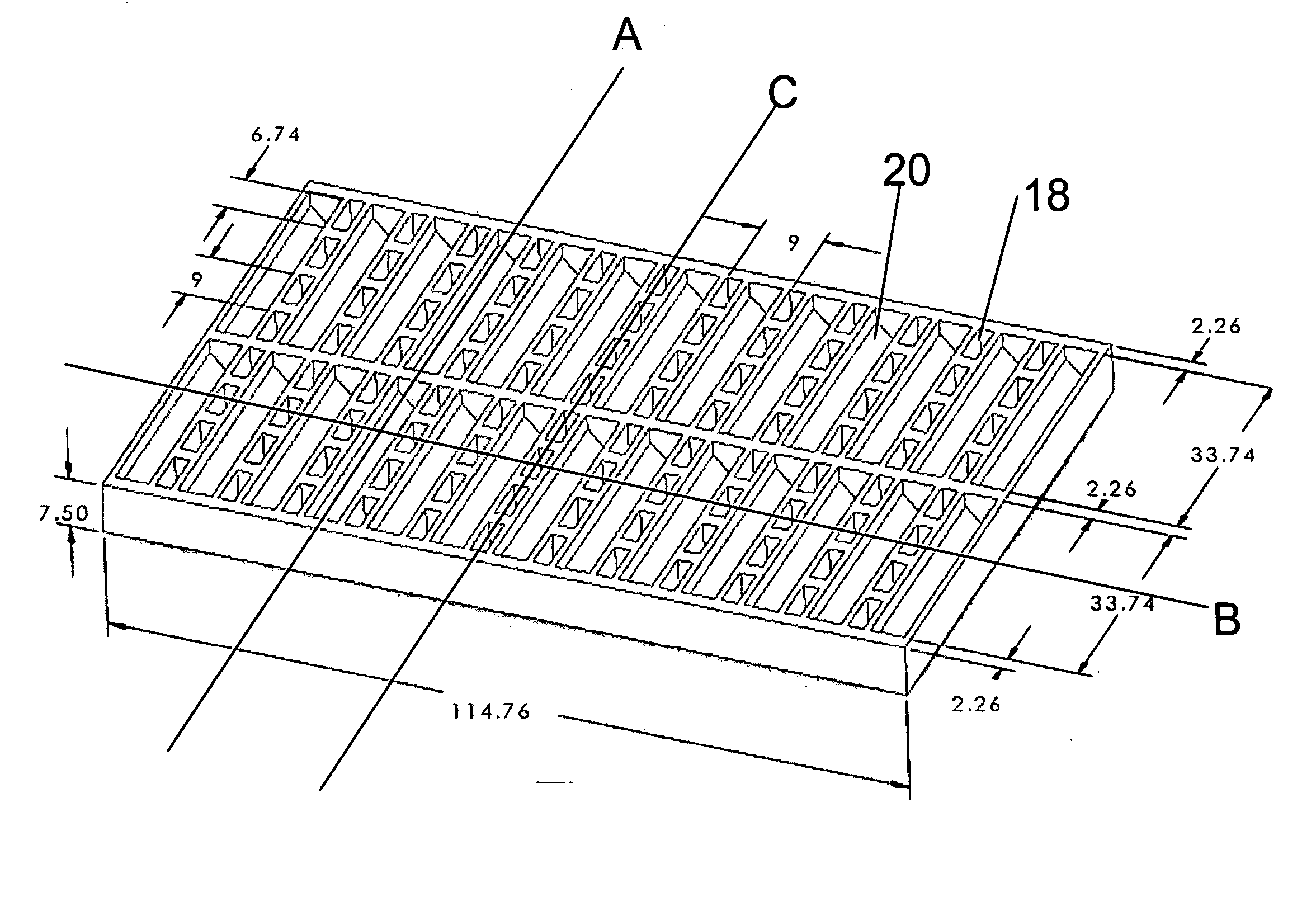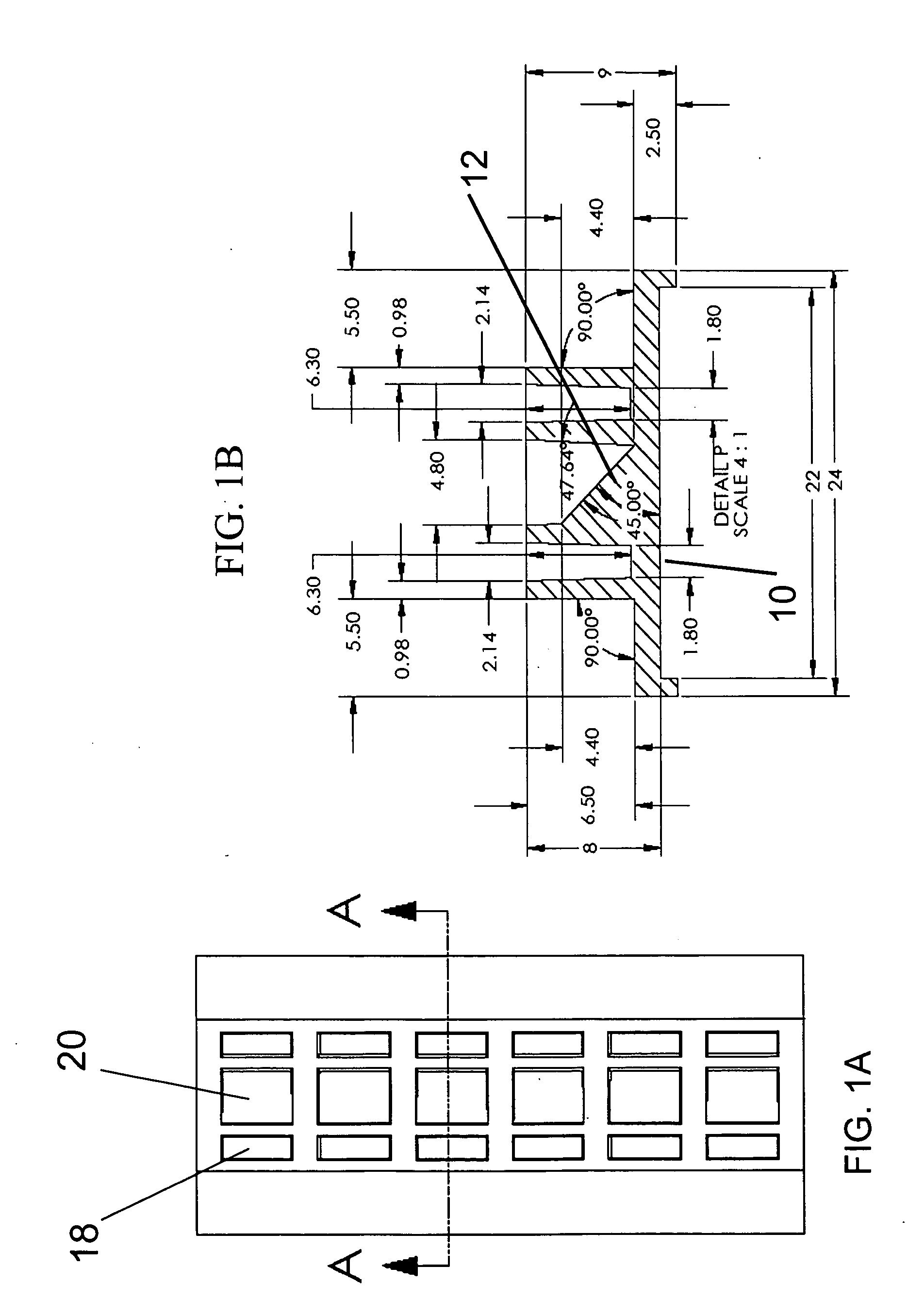Side view imaging microwell array
a microwell array and microwell technology, applied in the field of microwell arrays, can solve the problems of low resolution, slow and expensive confocal microscopy, and no practical way to visualize the features of older larvae in a conventional 96-well microwell array, and achieve the effect of optimizing viewing and high packing density
- Summary
- Abstract
- Description
- Claims
- Application Information
AI Technical Summary
Benefits of technology
Problems solved by technology
Method used
Image
Examples
example 1
Imaging Fluorescent Particles
[0097]FIG. 18 shows a reflected white light image of a sample—90 μm fluorescent particles and a piece of 250 μm tubing glued to a plastic tab using optical-grade epoxy. The sample was illuminated from the top of the array using a white light source connected to an optical fiber. The radiation was collected by a microscope objective, and the radiation was directed to the objective by a polycarbonate prism formed in a 12-well array. When looking through the prisms, the light from the optical fiber was offset from the well.
[0098]FIG. 19 shows a fluorescence images of the sample—90 μm fluorescent particles and a piece of 250 μm tubing glued to a plastic tab using optical-grade epoxy. The sample was illuminated with 450-490 nm light delivered through a 2.5× objective.
example 2
Imaging Fixed Zebra Fish
[0099]FIGS. 20 and 21 show reflected white light images of a sample—a methanol / DMSO-fixed, 5 day old zebrafish larvae embedded in 0.5% low gelling temperature agarose. FIG. 20 shows a side view obtained using a polycarbonate prism formed in a 12-well array. FIG. 21 was collected through the bottom of the well. FIG. 20 illustrates an advantage of the technology, in that organ systems aligned along the ventral to dorsal surfaces of the zebrafish can be imaged, whereas little, if any, useful information can be extracted from the image taken through the bottom of the well.
[0100]FIGS. 22 and 23 show fluorescence images of a sample. More particularly, the figures show side and bottom view fluorescence images of a zebrafish larva imaged, respectively, through a side view prism and the bottom of a rectangular well. The zebrafish was genetically engineered to express a fluorescent protein (GFP) in its vasculature.
example 3
Side-view imaging
[0101] The feasibility of using side-view microarrays for collecting high-quality fluorescence images of zebrafish larvae is described. Wild-type animals were stained with the fluorogenic substrate, Ped6 [N-((6-(2,4-dinitro-phenyl)amino)hexanoyl)-1-palmitoyl-2-BODIPY-FL-pentanoyl-sn-glycero-3-phosphoetha)](Molecular Probes). Ped6 is an internally-quenched reporter for phospholipase A2 (PLA2) enzymatic activity. Ped6 incorporates a fluorophore and a quencher molecule which are attached to a phospholipid backbone. Upon cleavage, the fluorophore-containing moiety is absorbed by the small intestine and passes through the liver to the gall bladder where it accumulates prior to release into the intestinal lumen.
[0102] All images were generated using a Leica DM IRB inverted fluorescence microscope. Two long-working distance objectives were used: a 2.5× objective with a numerical aperture (NA) of 0.07 and a 5× objective with a NA of 0.15. In addition to their long-working...
PUM
 Login to View More
Login to View More Abstract
Description
Claims
Application Information
 Login to View More
Login to View More - R&D
- Intellectual Property
- Life Sciences
- Materials
- Tech Scout
- Unparalleled Data Quality
- Higher Quality Content
- 60% Fewer Hallucinations
Browse by: Latest US Patents, China's latest patents, Technical Efficacy Thesaurus, Application Domain, Technology Topic, Popular Technical Reports.
© 2025 PatSnap. All rights reserved.Legal|Privacy policy|Modern Slavery Act Transparency Statement|Sitemap|About US| Contact US: help@patsnap.com



